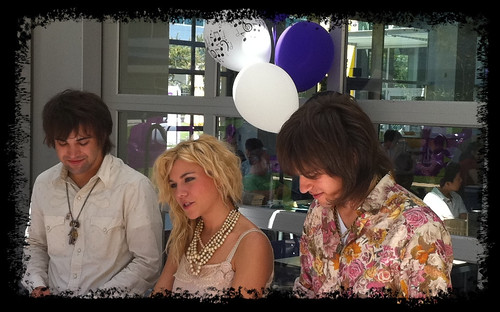Robbie Robertson’s Finest Musical Moments: With the Band, Bob Dylan, Solo, and for Martin Scorsese’s Films
The Band #TheBand

Long before Robbie Robertson became Martin Scorsese’s go-to film composer or music supervisor, the Canadian singer-songwriter-guitarist had a cinematic, storytelling edge to his songwriting. Most of the minutely detailed songs that Robertson wrote for the Band, ragged classics such as “Up on Cripple Creek,” “The Weight,” “The Night They Drove Old Dixie Down” and “The Shape I’m In,” were hauntingly filmic and evocative, as if you had stepped from the present day into a light-sensitive daguerreotype, like the image used for the photos in the Band’s galvanizing 1968 debut album “Music from Big Pink.”
After Scorsese helmed the film of the Band’s 1976 farewell concert, “The Last Waltz,” the two went on to work together on “Raging Bull,” “The King of Comedy,” “The Color of Money,” “Gangs of New York,” “The Departed,” “Shutter Island,” “The Wolf of Wall Street,” “Silence,” “The Irishman” and the upcoming “Killers of the Flower Moon.”
Robertson — who died Wednesday at the age of 80 — led a storied career that spans the early ‘60s up to his work on the forthcoming “Killer Moon.” Here are just 10 highlights from one of contemporary music’s most legendary artists.
Ronnie Hawkins and the Hawks’ “Hey Baba Lou” (1959)
Arkansas rockabilly legend Ronnie Hawkins made Robertson a part of his crew after the six-stringer’s rollicking ensemble, the Suedes, opened for his Hawks. An easy friendship was formed between the pair, and Robertson co-wrote the Yma Sumac-sounding bit of hillbilly exotica, “Hey Baba Lou,” for Hawkins’ “Mr. Dynamo” album. An auspicious and highly cinematic start.
Bob Dylan, “Ballad of a Thin Man” (1966)
Recorded during Dylan’s tumultuous 1966 British tour with the future Band backing him, the only thing more sinister-sounding than Garth Hudson’s organ fills is Robertson’s bluesy guitar licks — the sinew of this “Ballad.” Though you can find a mean take on “Ballad of a Thin Man” at the Manchester-taped “Bootleg Series Vol. 4: Bob Dylan Live 1966, The “Royal Albert Hall” Concert” release of 1998, I prefer this nervous-sounding May 1966 Newcastle gig recording.
The Band, “To Kingdom Come” (1968)
We could easily have dedicated all 10 spots here to Robertson’s songs written for the Band, but we’ll focus on the few he sang.
After living and recording with Dylan during the time of their woodshedding “Basement Tapes” period, The Band honed an (un)refined sound of their own, displayed in epic grandeur on their 1968 debut album, “Music from Big Pink.” In one fell swoop, Robertson wrote “Chest Fever,” “The Weight” (inspired by director Luis Buñuel’s saintly “Viridiana”), the exquisite “Caledonia Mission,” and “To Kingdom Come.” But in a band with three lead singers, he only loaned his vocals to the latter track, and would not sing on another Band release until 1977.
Neil Diamond, “Dry Your Eyes” (1976)
Robertson went for a big roaring sound when he co-produced Neil Diamond – at the glittering height of all things Neil – and a concept album, “Beautiful Noise,” about the joys and pain of a Tin Pan Alley song man. Not only did Robertson and Diamond mix it up behind the boards, they co-wrote “Dry Your Eyes,” with the Band man also playing guitar. Epic stuff all around, and Diamond even joined the Band for a hearty live rendition of “Dry Your Eyes” during its “Last Waltz” farewell.
The Band, “Knockin’ Lost John” (1977)
When Robbie Robertson finally did choose to sing again with the Band, it wasn’t until 1977 and their “Islands,” the last studio recording by the original incarnation of the ramshackle classicists. Robertson lends a light, nasal vocal touch to his hiccupping, self-composed track’s mix of reggae, conjunto and Orleans’ parish romping – a mixed-bag vibe considering how his solo career would soon begin to play out.
Robbie Robertson, “American Roulette” (1987)
For the bruised ambiance of his eponymously titled debut Geffen solo album, Robertson poetically portrayed the lives and consequences of American iconography through a brief, vivid retelling of Elvis Presley, James Dean and Marilyn Monroe’s downfalls. If you could squeeze the noir expanse of “The Boulevard of Broken Dreams” into one five-minute track….
Robbie Robertson, “Breakin’ the Rules” (1991)
Whether heard as part of his Southern gothic “Storyville” album, or that year’s Wim Wenders’ film, “Until the End of the World,” this sandy-voiced and gentle ballad allows Robertson a glossily produced shot at something he rarely tried – a straight, soft, love song filled with regret, yet hope.
Robbie Robertson, “Ghost Dance” (1994)
If Scorsese needed additional literary and gritty vocal gravitas for “Flower Moon,” the director didn’t need to go further than Robertson’s moody Tom Waits-like meditation on the murder of Indigenous People that was his “Music for The Native Americans” project with The Red Road Ensemble.
Robbie Robertson, “When The Night Was Young” (2011)
From an overly complex album, “How to Become Clairvoyant,” filled with an unusual assemblage of guests including Trent Reznor, Eric Clapton, Robert Randolph and Taylor Goldsmith of Dawes, “When the Night was Young” was one of latter-day Robertson’s finest – big theatrical piano runs coming out of nowhere, a Tom Petty-esque vocal delivery about fast lanes, street fights and red lights, and some fine slithering guitar work.
Robbie Robertson, “Theme for ‘The Irishman’” (2019)
Scorsese’s lengthy, lonely meditation on the last man standing in the mysterious Jimmy Hoffa murder is accompanied by one of Robertson’s most redolent scores, a bluesy hypnotic loop filled with oblique atmospheric guitars, thrumming bass, drumming courtesy Jim Keltner, and heavy harmonica.